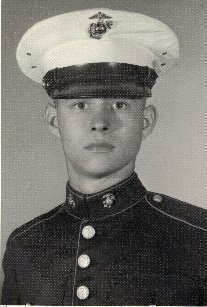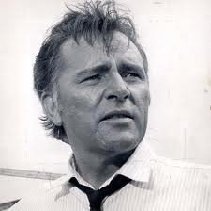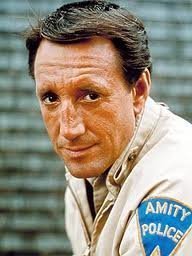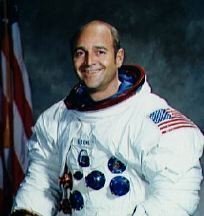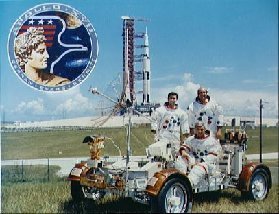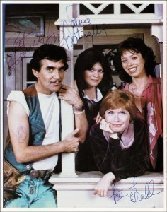And...Brian's high school buddy, my Italian son Alex
for "always faithful". Until 1871 it was "First to Fight",
a motto that still applies. Through the years, Marines have
shortened it to Semper Fi, and "Semper Fi, Mac" is the universal Marine Greeting."
A hula hoop is a toy hoop that is twirled around the waist, limbs or neck. It can also be wheeled along the ground like a wheel, with careful execution. They have been used by children and adults since at least 500 BC. The modern hula hoop was inspired by Australian bamboo hoops. Common lore posits the creators of the plastic hoop popularized in the US witnessed Australian children playing with bamboo hoops while driving past in an automobile. The new plastic version was popularized in 1958 by the Wham-O toy company and became a fad.
Hula hoops for children generally measure approximately 28 inches in diameter, while those for adults measure around 39 inches. Traditional materials for hoops include willow, rattan (a flexible and strong vine), grapevines and stiff grasses. Commercial hoops are usually made of plastic tubing.
Origins
Native American Hoop Dance is a form of storytelling dance incorporating hoops as props. These props are used to create both static and dynamic shapes, which represent various animals, symbols, and storytelling elements. The dance is generally performed by a solo dancer with multiple hoops.
Before it was known and recognized as the common colorful plastic toy (sometimes filled with water or sand), the traditional "hula hoop" was made of dried willow, rattan, grapevines, or stiff grasses. Though they have been in existence for thousands of years, it is often incorrectly believed that they were invented in the 1950s.
Author Charles Panati records a "craze" with the usage of wooden and metal hoops in 14th-century England. He reports that doctors treated patients with pain, dislocated backs, and even heart failure due to hooping. Panati also says that the name "hula" came from the Hawaiian dance in the 18th century, due to the similar hip movements.
Modern history
The hula hoop gained international popularity in the late 1950s, when a plastic version was successfully marketed by California's Wham-O toy company. Cane hoops had been popular children's toys to be rolled on the ground and kept balanced for as long as possible. In 1957, children in the Norwegian town of Steinkjer began a fad described in the English press as "rock-rings", with the description being "These are huge cane rings which little girls swing round their bodies by moving their hips and arms." An August 7 news item described the origin as children buying cane rings after seeing ring jugglers at a circus that visited Steinkjer and added "It wasn't long before most of the children in the town had caught the 'wiggle-rock' craze. Now it is all over Norway." In the same summer, schoolgirls in Australia were using the hoops and news came to the United States with the first reference to the toy as a "Hula hoop", described as "all the rage among the female small fry of Australia. This is old fashioned hoops with a difference. You don't roll them, you put them around your middle and by swinging the hips in a circular motion to keep the hoop revolving— hence the name.".
According to "The Playmakers: Amazing Origins of Timeless Toys" by Tim Walsh, the bamboo hoop's path to plastic started in Australia when a Sydney teacher taught school students how to sway bamboo hoops in sports classes. Australia's Coles department stores then started selling bamboo hoops and demand soon outstripped supply. Coles then asked legendary toy man Alex Tolmer (also known as Alec), who founded toy company Toltoys, to help mass produce hoops. In 1957, Tolmer used Polyethylene which was stronger and less brittle than earlier plastics. The new lightweight plastic hoops sold in a variety of colors for less than $2. Toltoys sold 400,000 plastic hoops in Australia in 1957 alone. According to Tolmer's Melbourne-based son, David Tolmer, Toltoys already had a good working relationship with Wham-O in the United States and when Wham-O told Toltoys the hoop was too generic to warrant a royalty, Alex Tolmer instead asked the US company to sponsor one bed in an Australian children's hospital. By 1958, Wham-O plastic hoops were being used in California and then the craze for hooping swept the United States and beyond.
Richard Knerr and Arthur "Spud" Melin of Wham-O updated the Toltoys design and manufactured 42 inches diameter hoops from Marlex plastic. The earliest known advertisement was seen for the "Hula-Hoop by Wham-O" was seen on June 16, 1958 for "The Broadway" chain of department stores in Los Angeles, for sale for $1.98 (equivalent to $20 more than 60 years later). With giveaways, national marketing and retailing, a fad began in July 1958: twenty-five million plastic hoops were sold in less than four months, and sales reached more than 100 million units in two years. Carlon Products Corporation was one of the first manufacturers of the hula hoop. During the 1950s, Carlon was producing more than 50,000 hula hoops per day. Saddled with a glut of unwanted Hula Hoops, Wham-O stopped manufacturing the toy until 1965, when Knerr and Melin came up with a new twist: They inserted ball bearings in the cylinder to make a "shoosh" sound. The hoop was inducted into the National Toy Hall of Fame at The Strong in Rochester, New York, in 1999.
- 1 (8-ounce) package cream cheese, softened
- 1/2 cup sour cream
- 1/2 cup grated parmesan cheese
- 1 teaspoon garlic powder
- 1/2 teaspoon ground nutmeg
- 1/4 teaspoon salt
- 1/4 teaspoon cayenne pepper
- 1 (8-ounce) package frozen chopped spinach, thawed and squeezed dry
- 1 cup frozen (thawed) or canned (drained) artichoke hearts, chopped
- 1 1/2 cups shredded mozzarella cheese, divided
- _BLANK_
- BUTTERY CHEESE TOPPING
- 3 tablespoons butter, melted
- 2 tablespoons grated parmesan chees
- Preheat the oven to 375º. In a medium bowl, combine cream cheese, sour cream, ½ cup parmesan cheese, garlic powder, nutmeg, salt, and cayenne pepper; mix well. Add spinach artichoke hearts, and 1 cup mozzarella cheese; mix until thoroughly combined.
- Slice rolls in half horizontally without separating and place bottom half on a rimmed baking sheet. Spread spinach mixture evenly over rolls, sprinkle with remaining 1/2 cup mozzarella cheese. Place top half of rolls over the cheese.
- To make the Buttery Cheese Topping, in a small bowl, combine melted butter and 2 tablespoons parmesan cheese; mix well. Brush mixture over tops of rolls. Cover with aluminum foil. Bake for 20 minutes. Remove foil and continue to bake for 5 minutes or until heated through.
***If you want, go ahead and make these in advance, and keep them in the fridge until you’re ready to bake them off. If you do, you might need to add a few extra minutes to make sure they’re heated through.
1924 – Russell Johnson, American actor (Gilligan's Island)

1925 – Richard Burton, Welsh actor (d. 1984)
1932 – Roy Scheider, American actor (d. 2008)
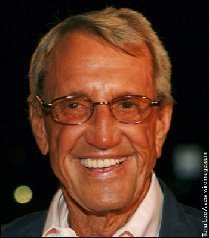
1933 – Ronald Evans, American astronaut (d. 1990)
1959 – Mackenzie Phillips, American actress
1969 – Ellen Pompeo, American actress
The birth of the U.S. Marine Corps began as a way to augment naval forces in the Revolutionary War.
The recruiting headquarters was in the Tun Tavern on Water Street in Philadelphia, which is considered to be the birthplace of the Marines.
Marine Corps Presence
HOW TO OBSERVE
UNITED STATES MARINE CORPS BIRTHDAY HISTORY
Commandant, General Lemuel C. Shepherd Jr. brought even more tradition to the warriors, always faithful and always loyal to each other, their country and their traditions. Beginning in 1952, the formal cake cutting ceremony began. During the ceremony, the first piece goes to the oldest Marine present and the second piece to the youngest. This tradition is still practiced today.


